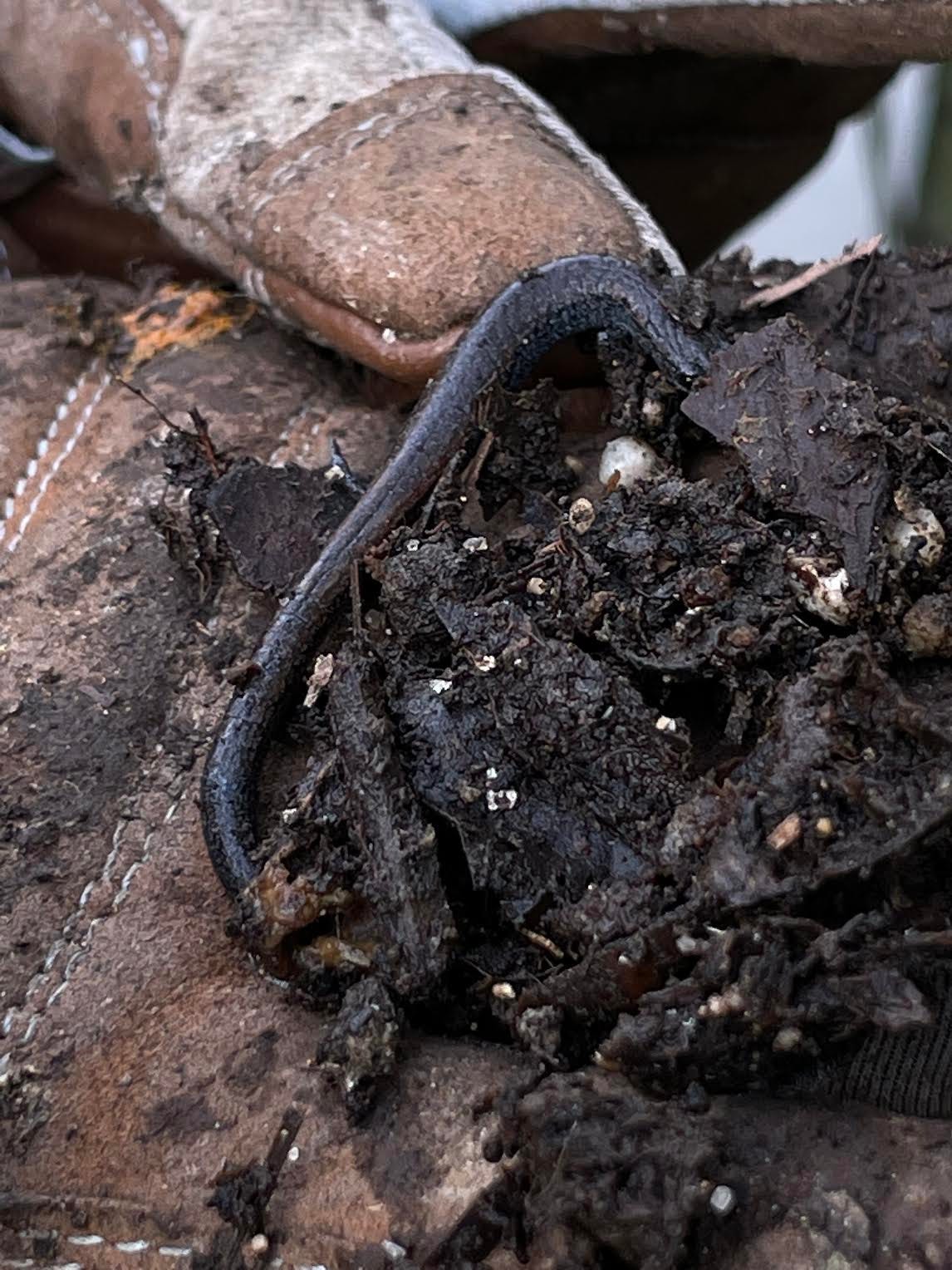On fungus and how to compost slowly
In praise of the not-hot, slow-decaying, totally-chill pile.
Ugh, I miss my compost.
Earlier this year, I left my long-time home in Angeleno Heights and relocated to a small amount of acreage in an unincorporated community on the outskirts of Los Angeles. On paper, this seemed like a great fit. More space, cleaner air, nearby mountains—but in reality, once I moved in, it felt wrong. Very wrong. My new place was good enough, but there were things from my old home that I began to miss terribly: my community garden, walking proximity to the compost hub I had built with a team of neighborhood volunteers, and (ache) my large, lovingly-tended, slow-decaying compost heap. It turns out that, for me, compost piles are just like people: unique and irreplaceable beings.
My old place didn’t have a yard big enough for compost, so I made due with the wedge of space between my tiny deck and kitchen window. The pile itself was built from food scraps, paper towel bits, dog’s fur, nail clippings, and whatever else was within reach and also biodegradable. There was never a reliable shape or temperature. My compost grew and shrank and grew again. She stayed mostly cool and worked very slowly but, throughout the years, I found her to be both alive and generous; full of earthly surprises. '
For example, if I added anything that used to be food, it would immediately erupt with renewed and vigorous life. Zucchini plants grew from zucchini seeds, carrot tops became twisted and leafy, and withered radishes began to sprout thick and twisted roots. Critters also abounded. A population of black beetles ebbed-and-flowed, earthworms were staples, and pill bugs were persistent. One time, after heavy rains, I found a California slender salamander tucked tenderly beneath some partially decomposed leaves, as slight and shy as his name would indicate. He stayed completely still as I gazed at him, only betraying his life with a set of slow and gentle blinks.
I loved the undirected pace of decay in my old pile. The compost made its own choices and I just let them happen, more steward than commander of its secret and internal processes. People are sometimes surprised by this. Not that I would get attached to my compost (lol), but the varied and flexible spectrum of what encompasses “compost,” altogether. Compost can be a systemic and vigorous affair, with specific ratios, temperatures, preparations and maintenance—but it can also be, simply put, slow. For practical reasons, you might even covet a slow compost.
When you compost “slowly”—leaving your compost undisturbed for long stretches of time—you give your pile a chance to mature beyond the initial, bacterially-driven phase of decomposition, and to progress toward fungal domination. A compost with good fungal content is able to break down different and hardier materials than a compost “stuck” in the bacterial phase due to consistent turning. It is also ideal for fertilizing mature trees and shrubs, or for improving the health of your soil. All those developed fungal threads expand the nutrient-cycling capacity of your dirt, making more food and water more available to your plants.
I’ve been thinking about my old compost and the strange, embarrassing grief I’ve experienced over its loss. Who mourns compost?! But my old heap gave so much to me. It gave me patience in the face of urgency; awareness of the time it takes for things to change. I needed this and still need it, frankly, for reasons both personal and decidedly global. My whole life changed, and so did everybody’s. Things happened to me, COVID happened to everybody, and now we all wake up every day faced with the startling reality that we are already living in a climate apocalypse. I miss my old compost because I miss nicking at the armor of inevitable doom. There are no big gestures left; none seem possible. What’s left? The smallest. The unintentional home for a salamander, the vitality in which other things can grow.
I’ll take it.
I stumbled onto an essay (“Handy tips on how to behave at the death of the world”) from a book (“New Weathers”) produced by Naropa University, which I loved so much that I ended up posting an open-sourced copy of it to my Instagram, in full. The essay is short and worth reading, but it calls for expressing one’s love with “non-invasive extravagance.” The feeling of love by giving, and not by needing. Yes. The author, Anne Herbert, also notes:
“Keep in mind standing in for ancestors including people who lived ten thousand years ago and also fishes. Might be best to do activities that would make some ancestors feel honored to be part of bringing you here. Silent statement to predecessors: Well, yeah, we blew the thing by killing ourselves. I tried to honor you as much as I could in that context…”
Compost is how I honor, slowly.
In the end, my new house didn’t end up working out. (You might have read about the housefire.) I put my things into storage and left Los Angeles for a little, floating around until I can figure out where to land next.
Despite it all, I’m not in a hurry.
Love,
Cass







Ack, I love this! I recently started a slow pile, though I can't say our regular piles are all that fast to begin with, but this one I'm incorporating more 'weeds' and woody matter that I wouldn't have done in the other, quicker piles. Love the newsletter!
Beautiful, as always. I’m chasing down that “Handy Tips” piece ...